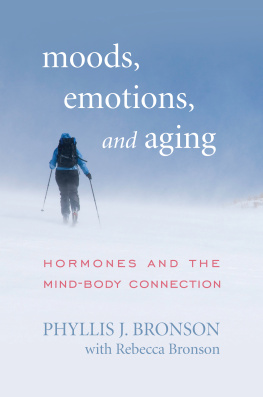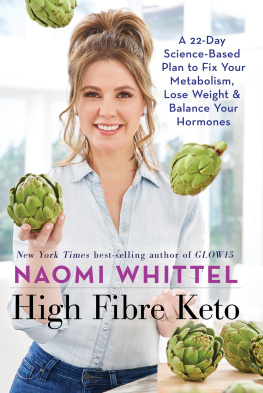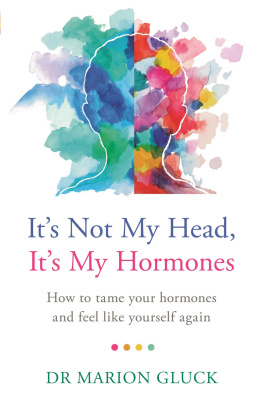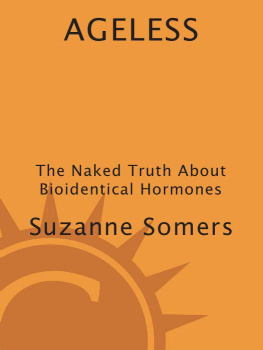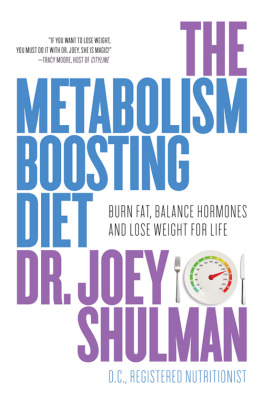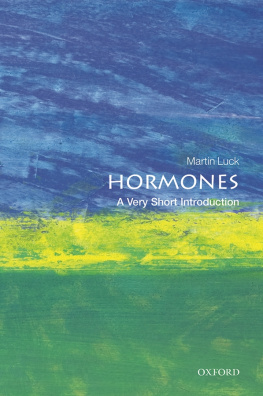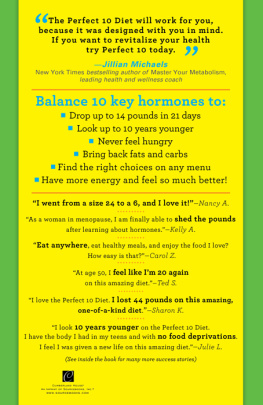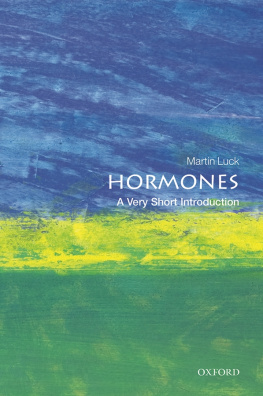The Truth About HORMONES
Vivienne Parry is a writer and broadcaster. Familiar as the presenter of many Radio 4 series on medicine, she writes a medical science column for The Times and is the science editor of Good Housekeeping magazine. She has been a presenter of Tomorrows World, a columnist for the News of the World and a reporter for Panorama. The Truth About Hormones was shortlisted for the Aventis Prize in 2006.

Published in trade paperback in Great Britain in 2005 by Atlantic Books, an imprint of Grove/Atlantic Ltd.
The digital edition published in Great Britain in 2014 by Atlantic Books Ltd.
Copyright Vivienne Parry, 2005
The moral right of Vivienne Parry to be identified as the author of this work has been asserted in accordance with the Copyright, Designs and Patents Act of 1988.
All rights reserved. No part of this publication may be reproduced, stored in aretrieval system, or transmitted in any form or by any means, electronic, mechanical, photocopying, recording, or otherwise, without prior permission both of the copyright owner and the above publisher of this book.
Every effort has been made to trace or contact all copyright holders. The publishers will be pleased to make good any omissions or rectify any mistakes brought to their attention at the earliest opportunity.
A CIP catalogue record for this book is available from the British Library.
eISBN: 9781782394907
Designed by Nicky Barneby @ Barneby Ltd
Atlantic Books
An imprint of Grove Atlantic Ltd
Ormond House
2627 Boswell Street
London
WC1N 3JZ
www.atlantic-books.co.uk
CONTENTS

ACKNOWLEDGEMENTS

Very special thanks to the following: Professor Eric Thomas, who gave up female hormones to be a fabulous Vice Chancellor and Professor Clive Coen, a fabulous neuroendrocrinologist, who each read my manuscript and offered much helpful comment; Professor Steve Franks, reproductive endocrinologist, for lending me several huge volumes from his hormone library, as well as for his thoughtful advice and support; Professor David Purdie, master of HRT and the spoken word for his comments on the menopause chapter, Dr Jo Marsden for her help with breast cancer; and physiologist Professor Michael Rennie, who made sense of insulin and growth hormone for me and who, when I apologized for making him read his subject transcribed for toddlers, came back with the words I want engraved on my tombstone: Your demotic is sufficiently racy not to be insulting. Only a scientist eh?
A special thank you to Tom Parkhill and the Society for Endocrinology who were unfailingly helpful in offering their contacts and knowledge and who made it possible for me to attend the International Congress of Endrocrinology 2004 in Lisbon. They also read the manuscript with good grace, despite being surrounded by hormones.
Many doctors and scientists were incredibly generous with their time: the sperm men, Professor Chris Barratt and Dr Allan Pacey, lactation specialist Professor Peter Howie, the ever patient Dr Alan Johnson of the Centre for Ecology and Hydrology, Wallingford, Professor Roger Gosden, Professor Shlomo Melmed, the sveltest obesity expert I know, Professor Steve Bloom, Professor Howard Jacobs, Blakemores, pre et fille (Professor Colin and Dr Sarah), Professor Sir Iain Chalmers, Dr Margaret Rees, Sir Dr Chris Flowers, Dr John Gilbody of Wyeth, Dr John Ashby of Syngenta, Dr Mark Lythgoe, Prof Neil Gittoes and Professor John Russell, come to mind in particular but there were many more that I bored to death with a constant stream of questions. To all of you, thank you. And what would I have done without the support, contacts and gossip from staff at the Science Media Centre, MRC, Nature News Service and the Environment Agency? I was also indulged by many of the science correspondents, including Tim Radford, Nigel Hawkes and Mark Henderson as I expounded my wilder hormone theories over a glass or three; and cosseted by John Adams, a professor of geography, who runs a course on statistics for the mathematically challenged. His attempt to instil understanding of standard deviation was largely successful.
When I last wrote a book, a decade ago, I swore I wouldnt do another one. The combination of Toby Mundy of Atlantic Books as inspirational, enthusiastic and talented a publisher as you could hope to find and my agent Pat Kavanagh, changed my mind. Dr Louisa Joyner edited this book and was a joy to work with, as were all the staff at Atlantic, including Jane Robertson, the copy editor whose family probably all got socks as presents because I drove Jane witless in the week before Christmas. I feel very lucky to have found them.
I owe a great deal to my family who endured me locking myself away for too long and for my patient and loving friends whom I neglected horribly while I wrote this, and for whom the excuse Its my hormones wore a little thin. Finally, this book is for my father. Had they known more about hormones thirty years ago, he might have been alive today, hopefully to be proud.
Vivienne Parry
Muswell Hill 2005
INTRODUCTION

Hormones rule your world. They control your growth, your weight, your metabolism, your fertility and water balance. They initiate and regulate life changes like puberty and menopause, they have a hand in the speed of ageing, whether you want sex or not (and even whether you enjoy it), and who you fall in love with. Their effects may occur in seconds and be over in a flash, or take months and last for thirty years. They control your mood and your emotions too, especially those that grip you in the most visceral way fear, anger, love.
Whatever your age or gender, whether you are petulant, cranky, spotty, forgetful, angry or just a little out of sorts, the odds are that someone is going to tell you Its your hormones. Irritatingly, theres a good chance theyre right.
The word hormone appears in the media almost every day. Challenged, people will hazard that testosterone is one, that the pill contains them and maybe that fish are changing sex because of them. This book will explain how hormones work and introduce the myriad ways that they control your life and the controversy and outrage that so often attend them.
This book isnt a manual for those with hormone-based conditions like diabetes, thyroid disease or infertility, for whom there are already many practical guides. It is an introduction to a secret empire of stunning complexity and elegance, and will attempt to set out the truth about hormones.
Hormones are the slaves of one of the bodys two internal communication systems. The nervous system carries messages from the brain that are transmitted throughout the body by electrical stimuli. The hormone system more properly known as the endocrine system is much slower, and uses the blood as its medium for communication and chemicals hormones as its messengers. To compare the two systems is to compare a high-speed rail network with canals, or snail mail to e-mail.
Hormones are molecules with a very long history. Even the simplest of animals needed to communicate what was going on outside its body to each of its cells inside. Without some form of internal communication, how could it coordinate a response that would ensure its survival? Come to that, how could the animal function as one organism, without some means of enabling all its constituent parts to talk to each other?
Next page

